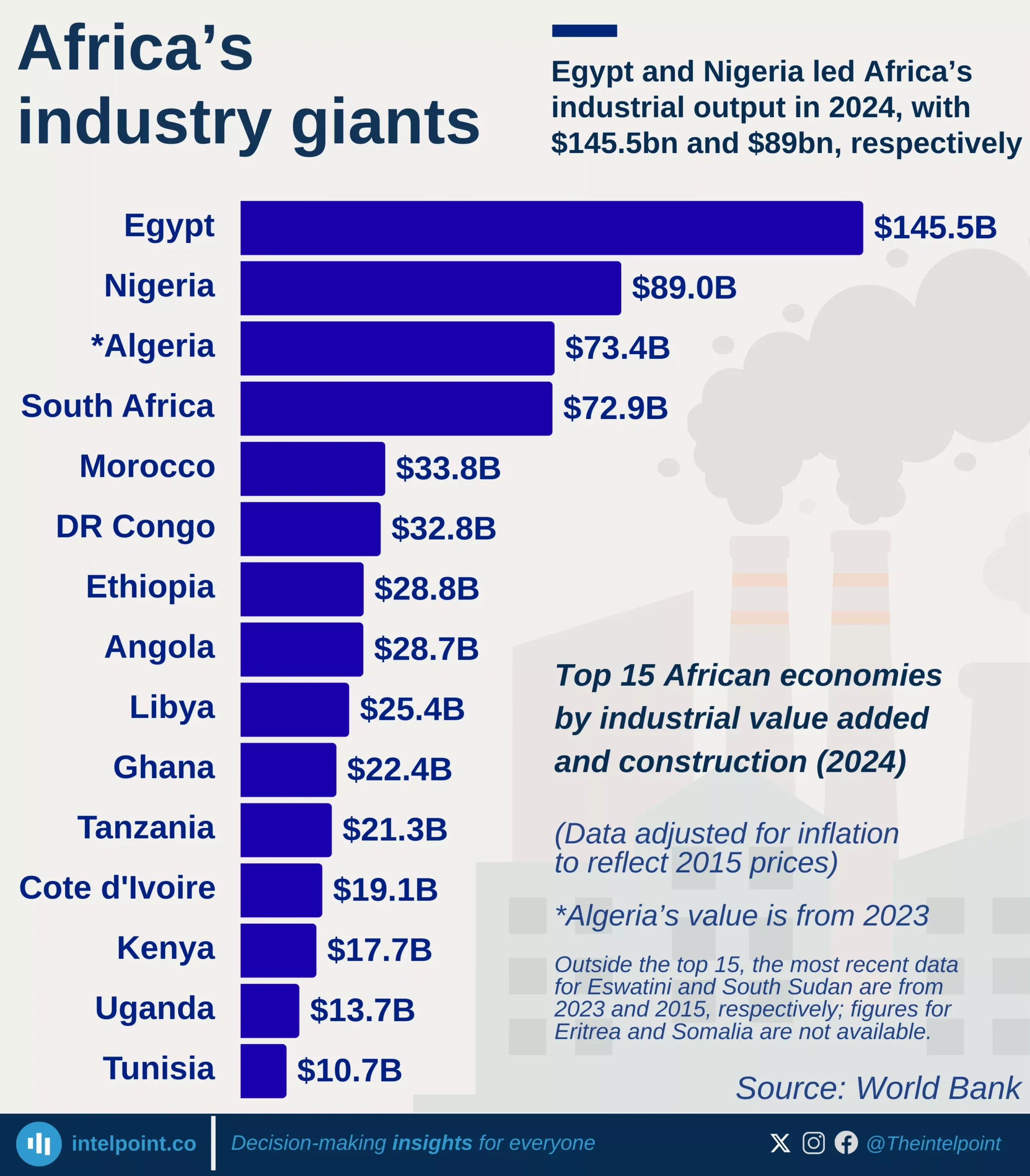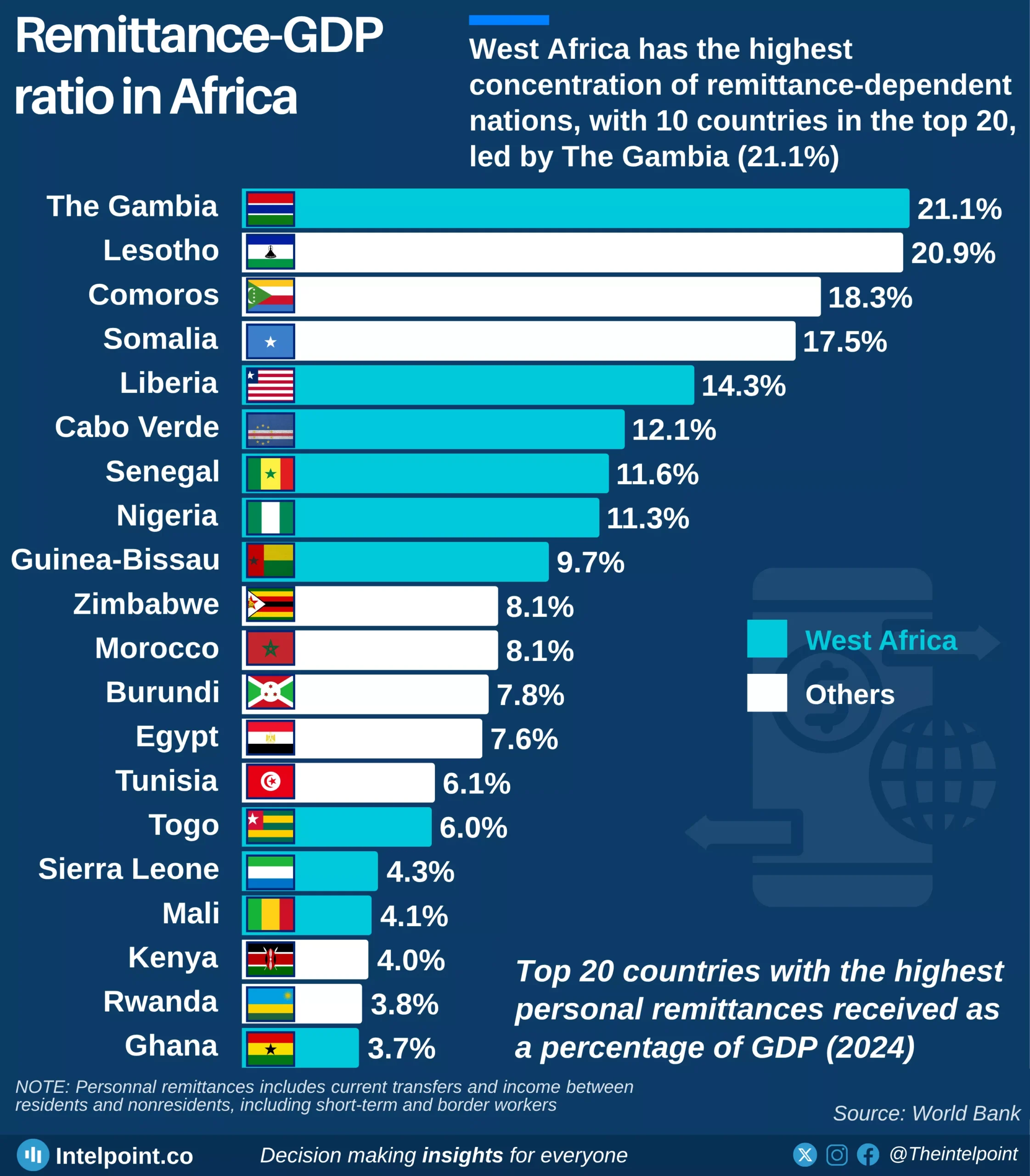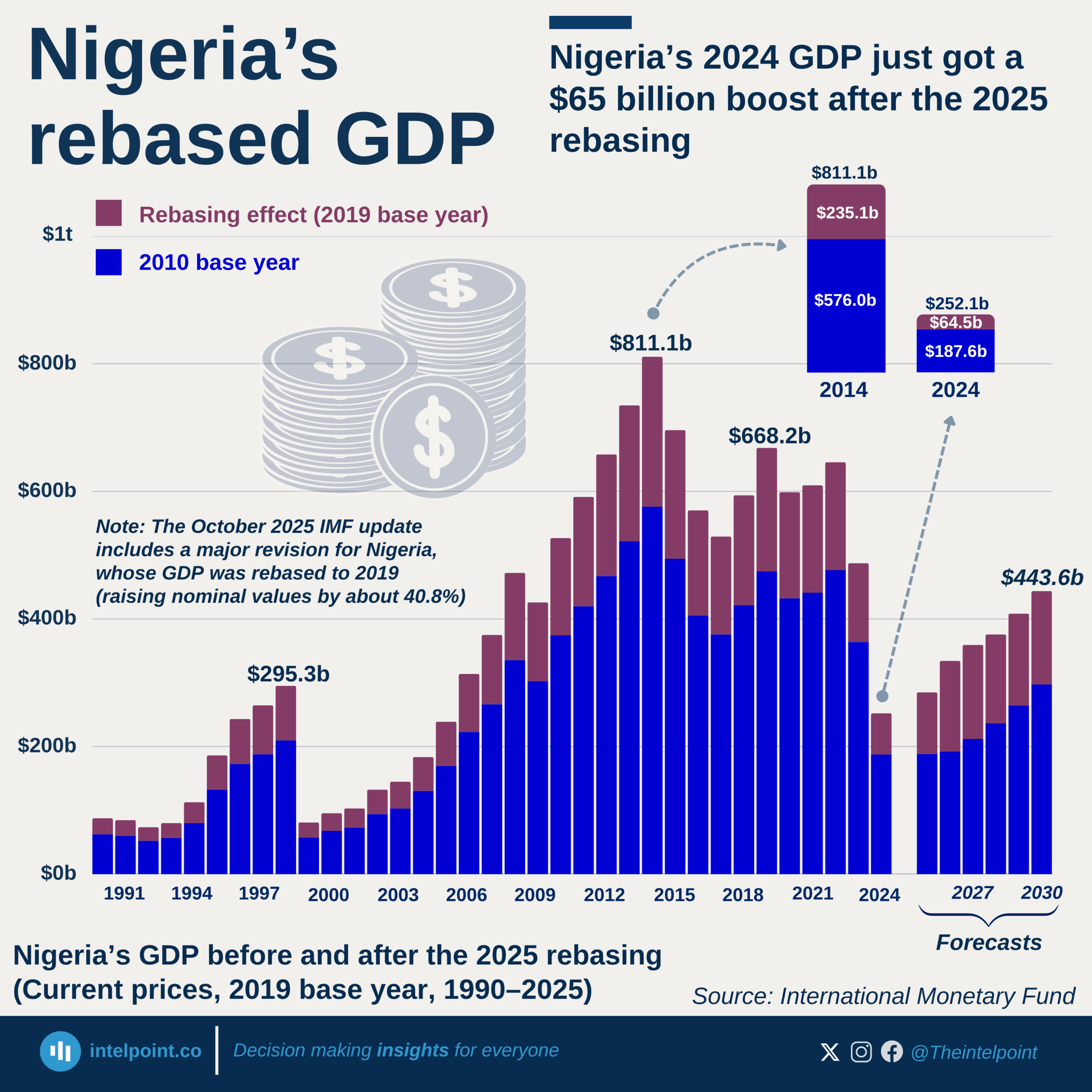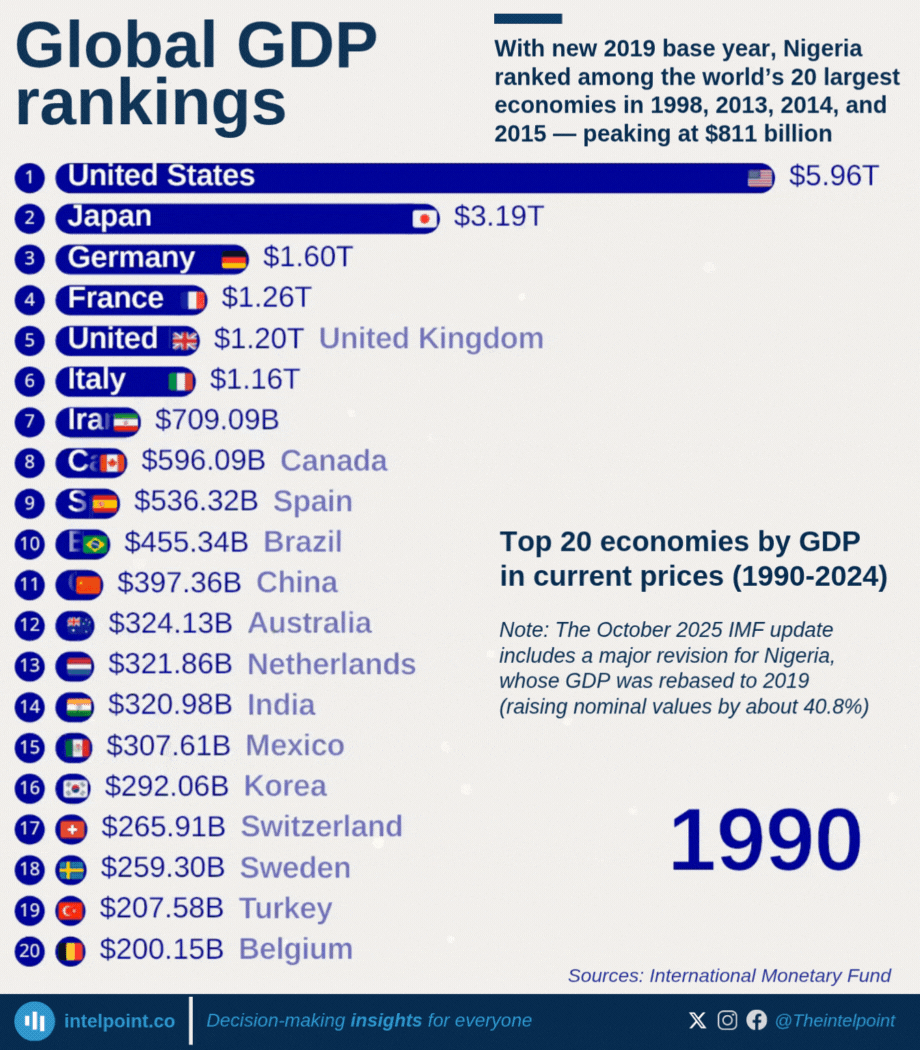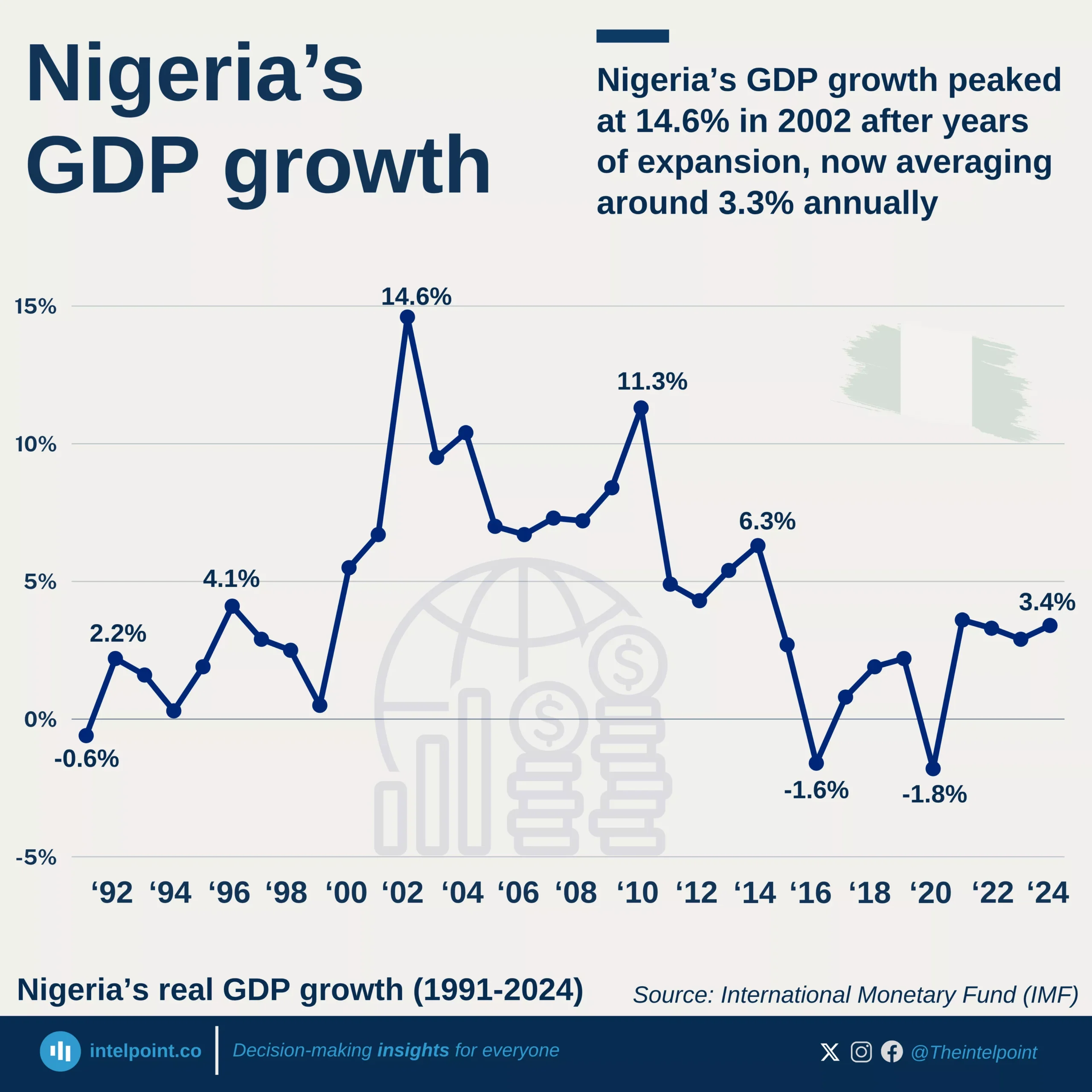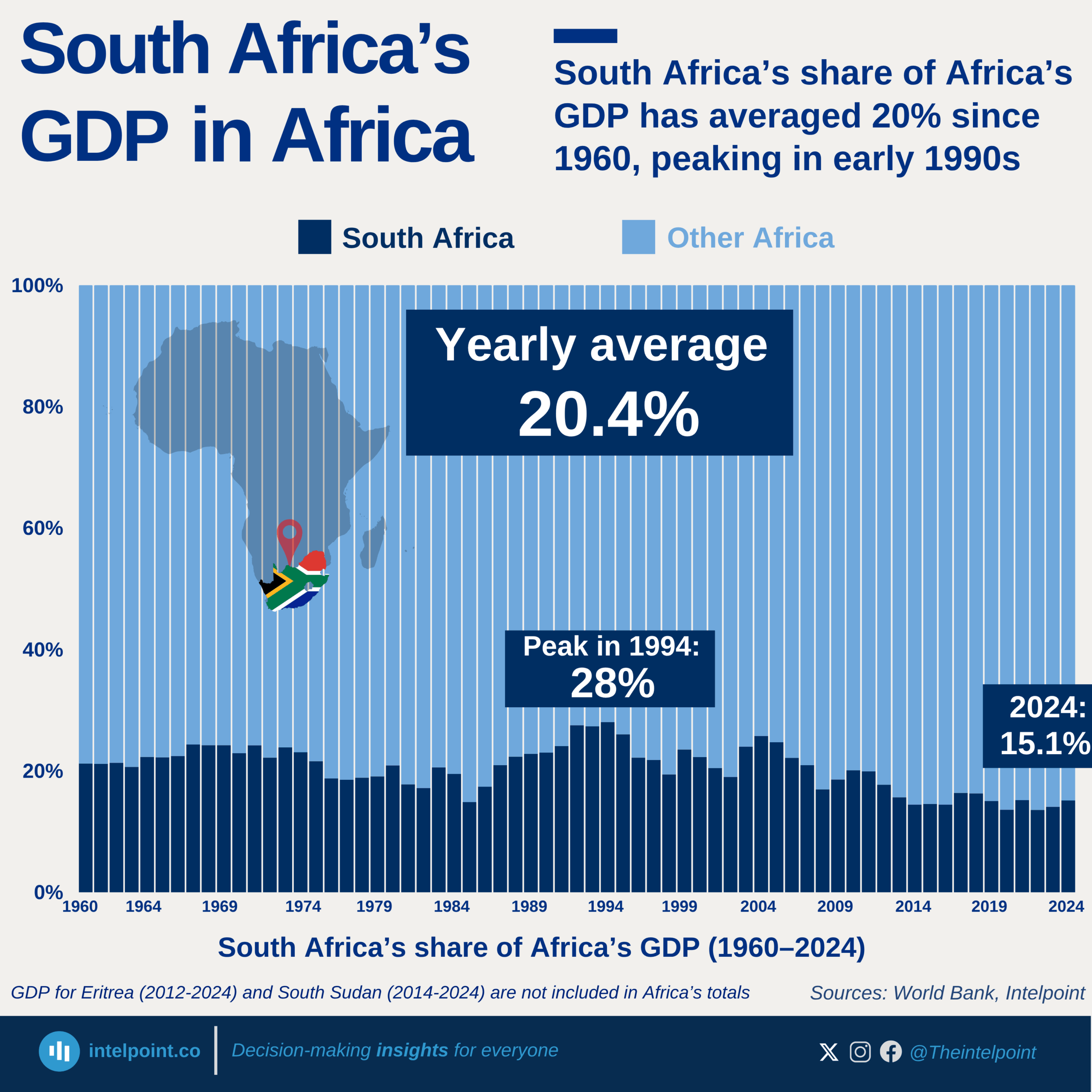Sudan experienced the sharpest economic contraction in Africa in 2024, with its GDP plunging by -13.49%—the worst performance across the continent. Alongside Sudan, Botswana and Libya also saw their economies shrink, reinforcing the heavy toll that political, social, and economic disruption continues to take on national growth trajectories. The rest of the bottom 10 countries mostly posted growth below 2%, signalling either stagnation or vulnerability to external shocks.
Some of these low-growth countries, like South Africa (0.58%) and Tunisia (1.35%), are seen as relatively advanced or historically stable economies, yet they’re still struggling to gain momentum. This points to deeper structural issues such as high unemployment, low investment confidence, policy bottlenecks, and weak productivity growth.
